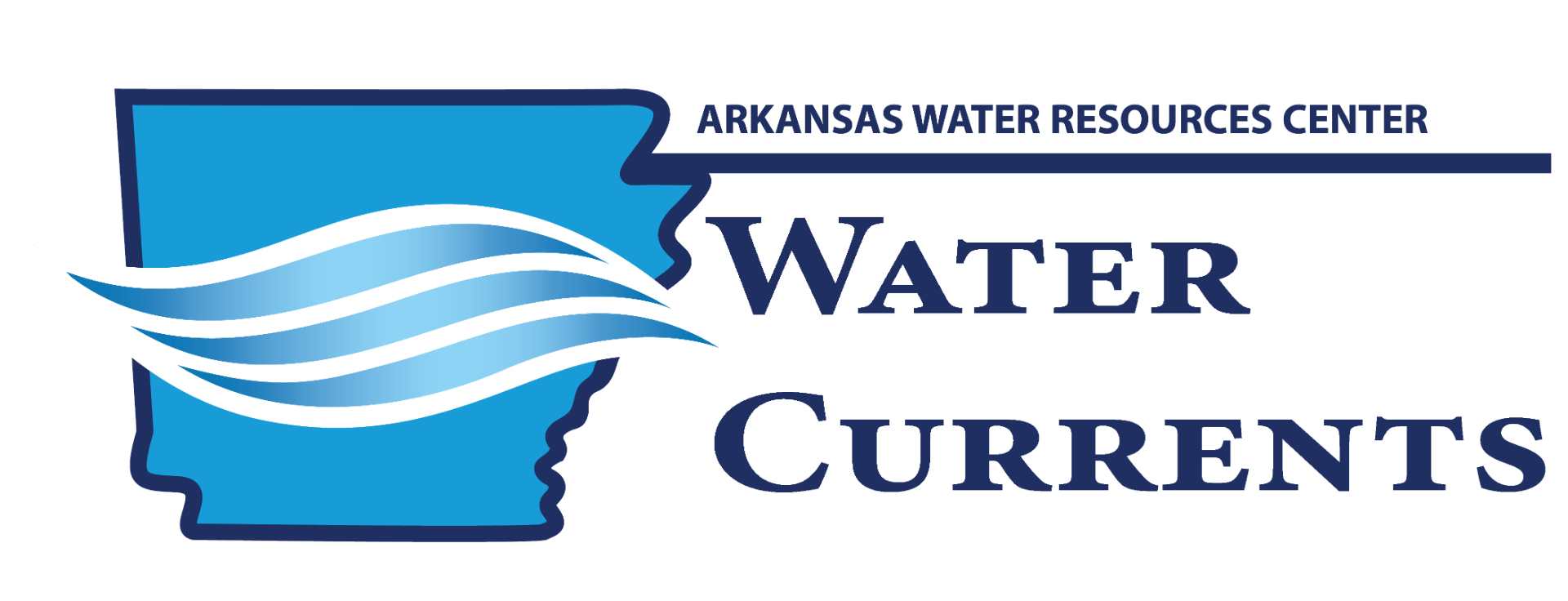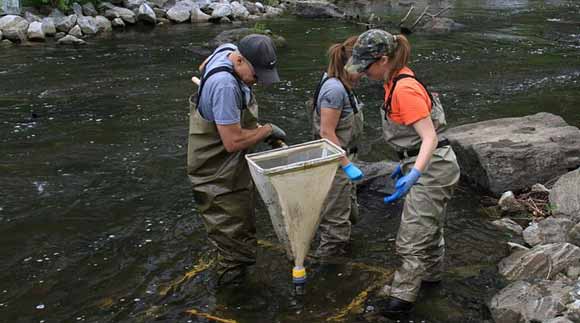
Utility Uses Forest Management to Protect Water Supply
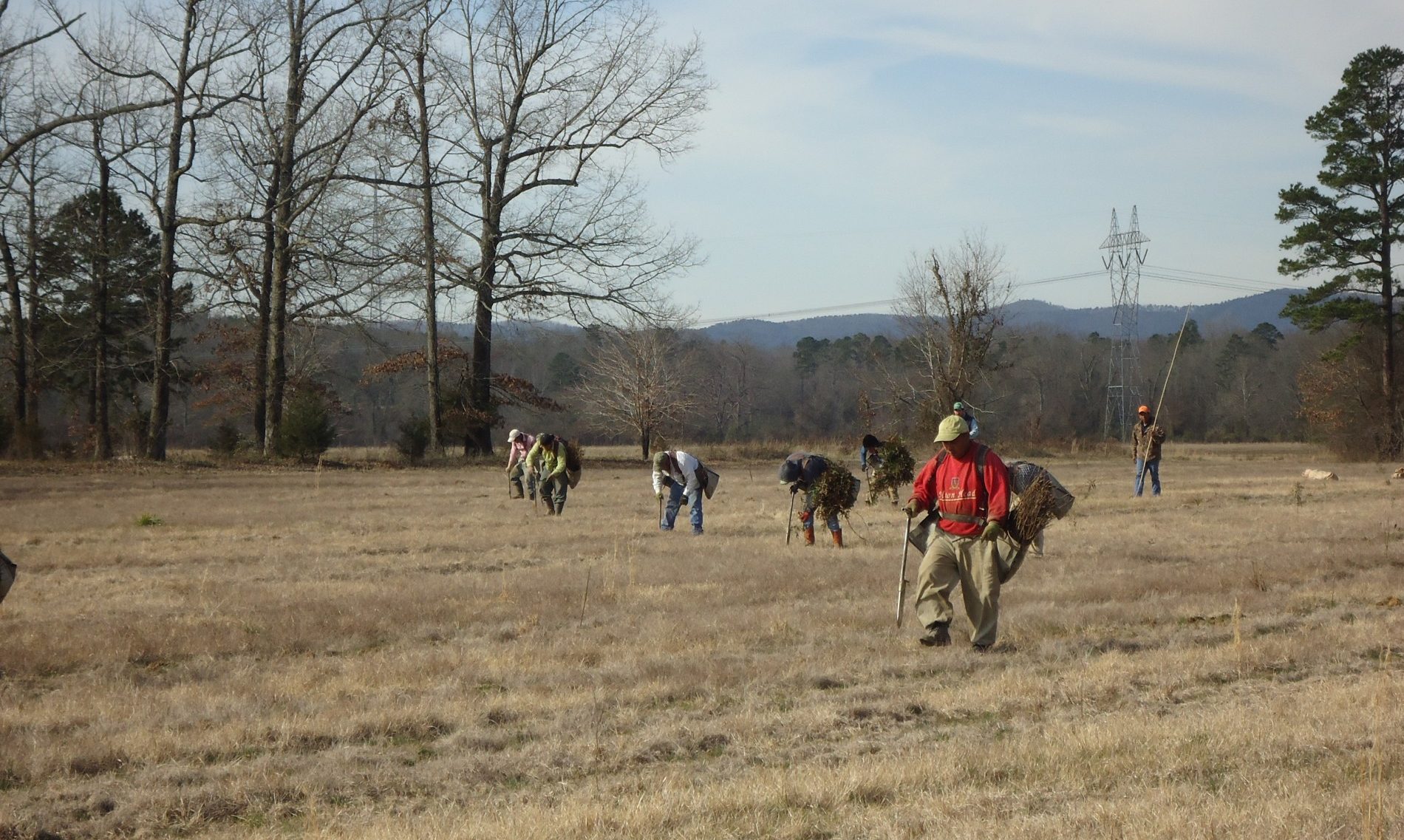
“A forest, large or small, may render its services in many ways.” This quote by Gifford Pinchot rings true to today’s drinking water suppliers, like Central Arkansas Water (CAW), the State’s largest drinking water utility.
Drinking water treatment depends greatly on the quality of the source water – the river, lake, or reservoir that water is drawn from. Treatment plants can clean low-quality water, but this can cost huge amounts of money and can result in the production of harmful chemicals called disinfection byproducts (DBPs). DBPs can occur because of reactions between naturally occurring organic matter, such as algae, in the source water and disinfection chemicals such as chlorine.
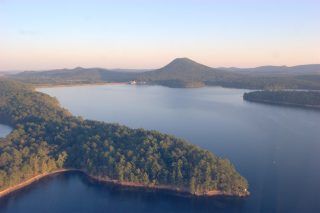
Lake Maumelle with intake of water treatment plant.
Treatment plants can also invest in watershed management activities, which are designed to protect drinking water supplies before they become polluted. CAW focuses efforts on buying and managing forested lands as a means to protect water quality in Lake Maumelle, the utility’s primary water source.
“When we invest in forest management, we get a much bigger bang for the buck than if we had to upgrade equipment at the treatment plant”, said Raven Lawson, Watershed Protection Manager at CAW. It’s cheaper to prevent source water pollution than it is to treat polluted water. And it’s safer to drink since it’s less likely to be contaminated with DBPs.
Like many drinking water providers throughout the State and country, CAW aims to protect and maintain high-quality source water through forest management within the watershed. The Lake Maumelle watershed is already highly forested, at about 80%. But, 53% of the watershed is in private ownership and is still vulnerable to development. So CAW is in the business of buying forested land, or reforesting purchased land.
In 2010, CAW bought almost 1,000 acres on the Winrock Grass Farm. Most of this land was already forested, but they needed to reforest 140 acres. So, in the spring of 2016, they hand-planted 44,000 trees! They used a mix of tree species and planted them at locations specific to the type of soil and erosion potential of the land.
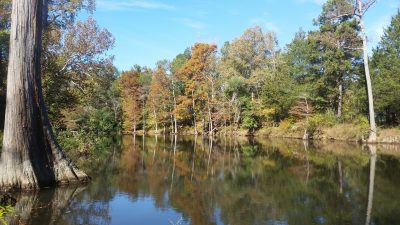
Maumelle River as it runs through the former Winrock Grass Farm. Cypress trees are native to the area and typical along the river landscape.
CAW owns more than 10,000 acres of the 88,000 acre Lake Maumelle watershed. However, their goal is to continue adding to the amount of land they own within the watershed. But, this costs money, so how do they do it? With the support of their customers, they enacted a 45 cent per month meter fee for “watershed protection”. This accumulates $1 million each year which goes into a land-conservation fund. On average, CAW acquires 160 acres of land per year.
It’s not enough just to own a bunch of forested land in an effort to protect source water quality. The land has to be managed properly too. CAW works with the Arkansas Forestry Commission (AFC), The Nature Conservancy (TNC), and others to do prescribed burning and selective, ecological thinning on their forested lands.

Controlled burn on Bufflehead Bay on Lake Maumelle.
These management techniques have many environmental benefits. For example, prescribed burning and selective thinning will open up the tree canopy, allowing more light and rainwater to reach the forest floor. Native plants and grasses will be able to flourish and provide a great root system to filter water, cleaning it before it flows to nearby streams and ultimately into Lake Maumelle.
Forests help to reduce the amount of nutrients, sediments, and other pollutants that reach the lake. This means a lower cost to treat the water and a cleaner product for the consumer. “We know there’s a big economic and health savings we get from forests, and we’re in the process of figuring out just how much we can save on treatment costs at the plant,” said Randy Easley, Director of Water Quality at CAW.
“Of course, we have to thank all our partners for the success of our forest management program”, Randy said. CAW partnered with the U.S. Forest Service through the Forest Legacy program, the State Legislature, and the Arkansas Game and Fish Commission to purchase the Winrock Grass Farm, and with the Arkansas Forestry Commission and the University of Arkansas at Monticello to plan and implement reforestation at that site. “Successful source water protection strategies rely largely on fostering partnerships with forest services,” Randy concluded.
About Central Arkansas Water: CAW is a metropolitan water system that serves a population of approximately 450,000 Arkansans, and has 125,000 residential, commercial, industrial, and master-metered customers in Pulaski, Saline, and Grant counties. The utility currently is a core partner in a regional initiative to secure a future water source for the entirety of Central Arkansas, an urban area with a population of more than 750,000 people.
